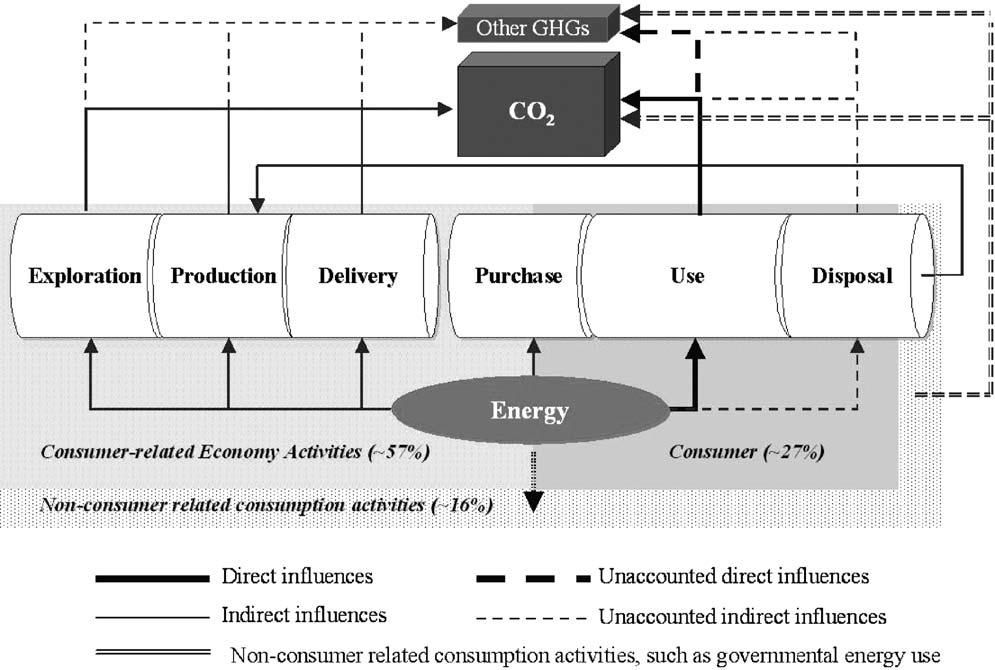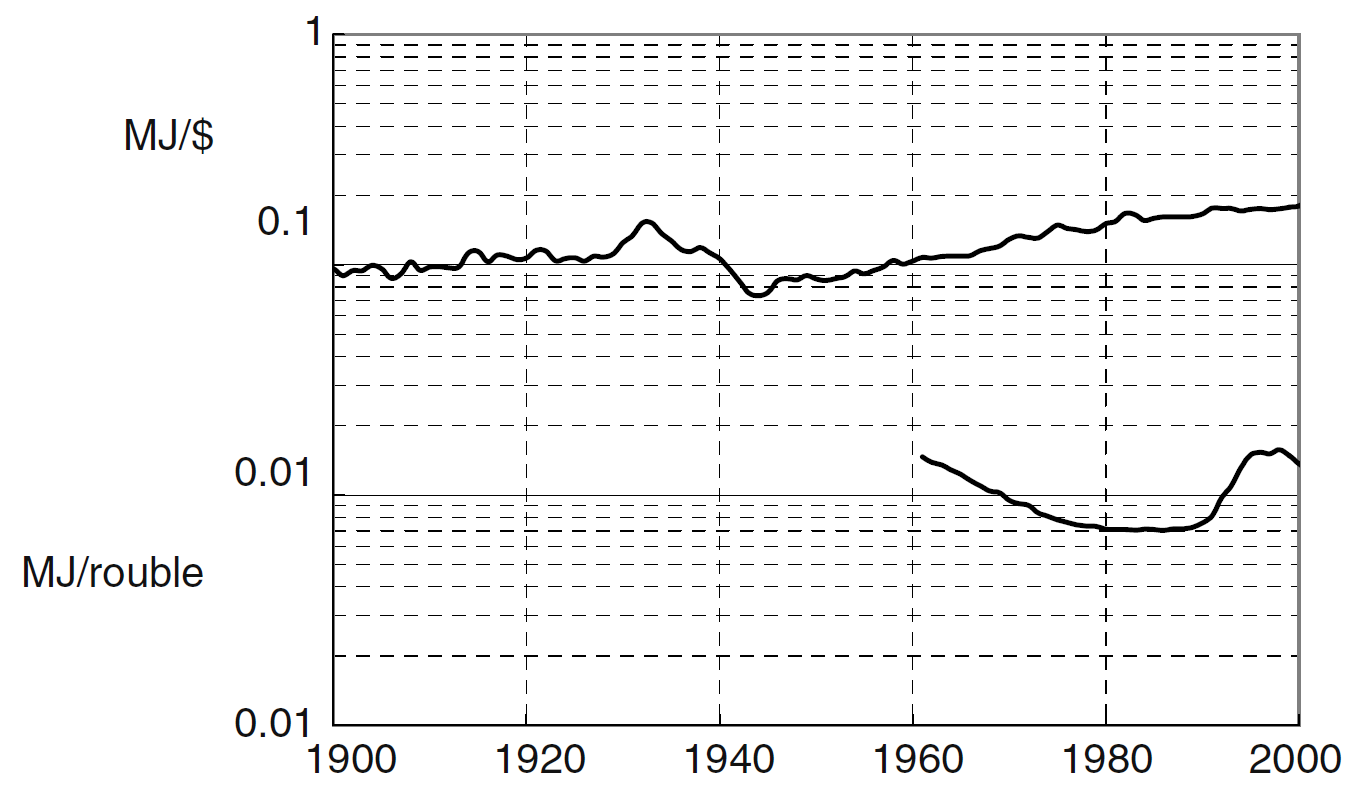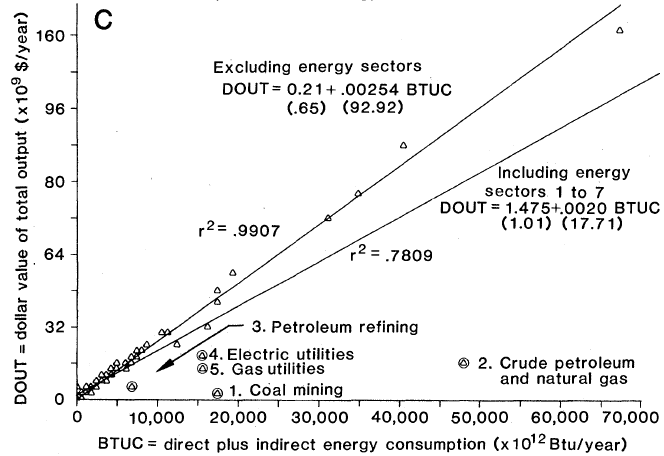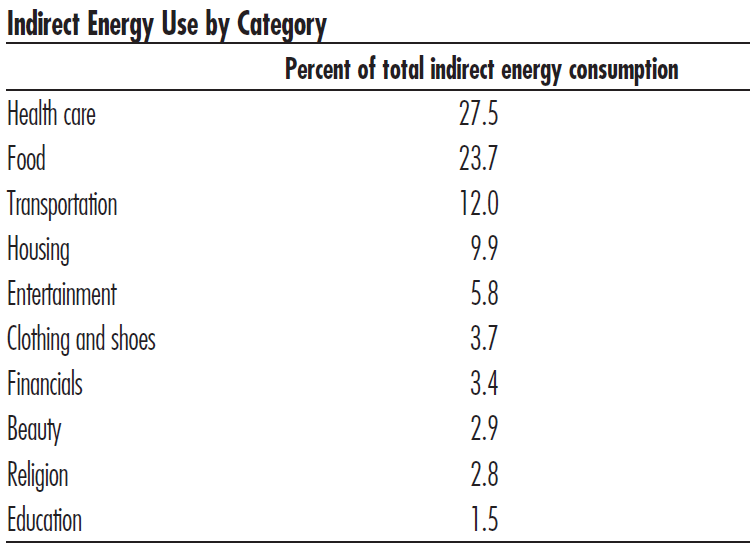
Consumer and non-consumer energy use [1]
“If we have available energy, we may maintain life and produce every material requisite necessary. That is why the flow of energy should be the primary concern of economics…”[2]

The `energy content’ of money units [3]
The flow of energy is the primary concern of what has been come to be known as energy analysis… An important aspect of energy analysis is the determination of the total (direct and indirect) energy required for the production of economic or environmental goods and services. This total has been termed the embodied energy.
For example, the energy embodied in an automobile includes the energy consumed directly in the manufacturing plant plus all the energy consumed indirectly to produce the other inputs of auto manufacturing, such as glass, steel, labor, and capital.

Energy use vs. dollar value
in various direct and indirect energy-using sectors [2]
Most Americans think of energy use in terms of big-ticket items such as gasoline, heating oil, and natural gas. But a great deal of the energy we use is indirect, embedded in the things we buy.
…it is hard for consumers to change their direct energy use radically or quickly. Houses and cars are expensive, depreciating, long-lasting assets. Household energy efficiency modifications can be costly, unsightly, inconvenient, or all of the above.
Pondering the difficulties involved in cutting back on energy use led us to an offshoot of the energy literature pertaining to indirect energy use—that is, the energy embedded in virtually everything we buy.
An example of this is the manufacturing and sale of a simple cotton t-shirt. Energy is required to grow and harvest the cotton; transport it to a factory; make, package, and transport the chemicals used to bleach, dye, or condition the cotton; run the machines on which the t-shirt is processed; create packaging materials; ship the t-shirt to the store; and keep the heat and lights on in the store.

Those who want to reduce their energy consumption but are unable or unwilling to forego the roomier house or car can cut down on discretionary medical purchases; minimize pharmaceutical waste; cut back on air travel; and replace high-energy foods (beef and refined grain products) with lower-energy foods such as poultry, legumes, and fresh fruits and vegetables.[4]
- Bin, Shui, and Hadi Dowlatabadi. “Consumer lifestyle approach to US energy use and the related CO2 emissions.” Energy policy 33.2 (2005): 197-208.
- Costanza, Robert. “Embodied energy and economic valuation.” Science 210.4475 (1980): 1219-1224.
- Beaudreau, Bernard C., and Vladimir N. Pokrovskii. “On the energy content of a money unit.” Physica A: Statistical Mechanics and its Applications 389.13 (2010): 2597-2606.
- Green, Kenneth P., and Aparna Mathur. “Measuring and Reducing Americans’ Indirect Energy Use.” AEI Energy and Environment Outlook (2008).